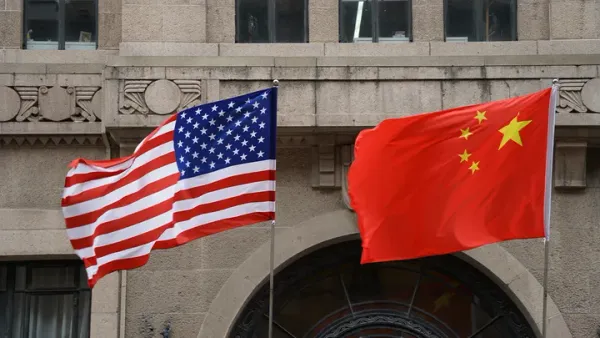The Executive Trifecta: How CISO, DPO, and CCO Collaboration is Redefining Cybersecurity Defense in 2025

The New Reality: When "Too Big to Fail" No Longer Exists
The digital battlefield of 2025 has fundamentally shifted. Where organizations once believed scale provided immunity, today's threat landscape proves that no entity—regardless of size, reputation, or resources—is beyond the reach of sophisticated cyber adversaries. The era of "too big to fail" in cybersecurity is dead, replaced by a harsh reality where multi-billion dollar corporations can be brought to their knees by ransomware groups operating from anonymous corners of the internet.

In the first quarter of 2025 alone, 2,289 ransomware attacks were reported—a staggering 126% increase from the same period in 2024. Global cyber attacks jumped 47% year-over-year, with organizations experiencing an average of 1,925 incidents per week. This exponential growth isn't just about volume; it's about the sophistication and coordination of attacks that can cripple critical infrastructure, healthcare systems, and Fortune 500 companies with equal efficiency.
The Evolution of Executive Leadership: Enter the Trifecta
The traditional model of cybersecurity governance—where a single Chief Information Security Officer (CISO) bore the burden of organizational protection—has proven inadequate against modern threats. As cyber strategy, governance, reporting and risk management practices now face heightened scrutiny from regulators, with the potential for continuous oversight as the political landscape shifts, organizations are evolving toward a multi-disciplinary executive approach.
The Executive Trifecta represents this evolution:
The Chief Information Security Officer (CISO)
The strategic commander of cybersecurity operations, responsible for threat detection, incident response, and security architecture. Less than 50% of CISOs say they are involved to a large extent in strategic planning on cyber investments, highlighting the need for greater integration with business strategy.
The Data Protection Officer (DPO)
The guardian of privacy compliance and data governance, ensuring adherence to regulations like GDPR while managing the intersection of data protection and cybersecurity. By January 2025, the cumulative total of GDPR fines has reached approximately €5.88 billion, highlighting the continuous enforcement of data protection laws and the rising financial repercussions for non-compliance.
The Chief Compliance Officer (CCO)
The regulatory navigator who ensures organizational alignment with an ever-expanding web of cybersecurity regulations, industry standards, and legal requirements.
The Modern Threat Ecosystem: Multiple Vectors of Destruction
AI-Powered Cyber Attacks: The New Frontier
AI-powered cyberattacks leverage AI or machine learning algorithms and techniques to automate, accelerate, or enhance various phases of a cyberattack. The democratization of artificial intelligence has fundamentally altered the threat landscape:
Generative AI Weaponization: In 2025, threat actors will increasingly use generative AI to conduct more effective social engineering attacks. A top emerging AI-driven trend is voice phishing (vishing). With the proliferation of GenAI-based tooling, initial access broker groups will increasingly leverage AI-generated voices that sound shockingly realistic, even adopting local accents and dialects to deceive victims.
Enhanced Reconnaissance: AI can automate or accelerate much of this legwork, enabling adversaries to drastically shorten the research phase and potentially improve the accuracy and completeness of their analysis.
Adaptive Malware: In 2025, AI-enhanced malware attacks have emerged as a primary concern for U.S. IT professionals, with 60% of IT experts globally identifying it as the most concerning AI-generated threat for the next 12 months.
Deepfakes and Synthetic Media Threats
The rise of deepfake technology represents a new category of existential threat. 63% of cybersecurity leaders are concerned about AI and the potential creation of deep fakes. Deep fake awareness is lacking; only 71% of people globally know what a deepfake is, and only 0.1% can consistently identify deepfakes. More alarmingly, there were 19% more deepfake incidents in the first quarter of 2025 than there were in all of 2024.
Financial institutions have become primary targets, with 53% of financial professionals having experienced attempted deepfake scams as of 2024.
Ransomware Evolution: Beyond Encryption
The ransomware landscape has undergone a strategic transformation that extends far beyond traditional file encryption:
Triple Extortion: The New Standard
It is now common to see ransomware groups combining these strategies, operating triple or even quadruple extortion tactics. The evolution includes:
- Traditional Encryption: Locking critical systems and data
- Data Exfiltration: Threatening to release sensitive information
- Additional Pressure Points: Ransomware groups have recently started introducing additional extortion strategies to maximise impact and increase the likelihood of payment, including DDoS attacks, contacting customers and partners, media engagement, and even short selling publicly traded companies' stocks.
Ransomware-as-a-Service (RaaS)
RaaS has brought ransomware to the masses while allowing established ransomware groups to expand their operations and dramatically reduce the time needed to plan an attack. RaaS users—known as affiliates—access the ransomware tools in exchange for a slice of the profits, typically through pre-arranged revenue splits with the RaaS operators.
Insider Threats: The Enemy Within
A research by Verizon states that around 83% of businesses reported experiencing at least one insider attack in 2024. The insider threat landscape has evolved beyond traditional concerns:
Nation-State Infiltration: In multiple instances, the conspirators supplemented their employment earnings by stealing sensitive company information, such as proprietary source code, and then threatening to leak such information unless the employer made an extortion payment.
Hybrid Work Vulnerabilities: 70% of respondents express concern about insider risks in hybrid work contexts, reflecting the challenges of securing distributed, less controlled environments.
Privacy and Compliance: The Financial Consequences
GDPR and Global Data Protection Fines
The enforcement of data protection regulations has intensified dramatically. Meta, the parent company of popular platforms like Instagram and WhatsApp, has been penalized for failing to comply with the European Union's General Data Protection Regulation (GDPR) with a record-breaking €1.2 billion fine.
Key enforcement trends include:
Escalating Financial Penalties: GDPR establishes a two-tier administrative fine structure with maximum penalties reaching up to 4% of annual global turnover, creating significant financial exposure for non-compliant organizations.
Industry-Specific Targeting: Technology Sector: Heavy focus on consent validity, data minimization, purpose limitation, and international transfer compliance. Financial Services: Emphasis on data security, third-party processor management, and customer communication compliance.
The DPO Imperative
The Spanish AEPD fined Conseguridad EUR 50,000 for not having appointed a DPO. Organizations required to appoint Data Protection Officers face additional enforcement risks, making the DPO role critical to the executive trifecta.
The Coordinated Defense Model: When SHTF
Incident Response Evolution
Modern incident response requires seamless coordination between multiple executive functions:
The CISO's Role in Crisis Management
- Strategic Coordination: To gain executive buy-in, consistently measure and quantify risk in a way that resonates with your C-suite and stakeholders, communicate risks from a business perspective, and demonstrate the direct impact a robust cybersecurity plan can have on your company's growth trajectory and overall risk profile.
- Technical Leadership: Directing threat hunting, containment, and eradication efforts
- Stakeholder Communication: Bridging technical teams and executive leadership
The DPO's Crisis Functions
- Regulatory Notification: Managing breach notifications to supervisory authorities within required timeframes
- Data Subject Communication: Coordinating communications to affected individuals
- Legal Compliance: Ensuring incident response aligns with privacy regulations
The CCO's Regulatory Coordination
- Multi-jurisdictional Compliance: Managing regulatory requirements across different jurisdictions
- Industry Standards: Ensuring alignment with sector-specific compliance requirements
- Legal Risk Assessment: Coordinating with legal teams on potential litigation exposure
Digital Forensics and Legal Coordination
Digital forensics plays a crucial role in incident response, pinpointing the root point of compromise, identifying and assessing the extent of a breach, and preserving evidence and artifacts of evidence, which some of the containment and remediation actions of incident response can destroy.
The modern DFIR (Digital Forensics and Incident Response) approach requires:
Multi-disciplinary Teams: For comprehensive incident management, businesses need a unified and well-balanced incident response team, rich with technical expertise and technical skills. Incident response teams primarily comprise IT professionals, but it's also important to have representation from human resources, compliance, and legal teams.
Legal Integration: Coordinates with external legal counsel, law enforcement, or regulatory bodies if necessary. Reviews and approves public statements or communications from a legal perspective.
Organizational Preparedness: Building the Integrated Defense
Breaking Down Silos
This siloed approach hinders the ability of the GRC team in cybersecurity and other areas to collaborate effectively. To overcome this challenge, organizations must establish an integrated GRC framework. This involves breaking down silos and creating a centralized GRC team structure that fosters collaboration between departments.
Executive Sponsorship
Another common challenge is the absence of leadership support, which can lead to underfunded GRC initiatives and a lack of accountability. Without buy-in from executives like the chief risk officer (CRO), chief compliance officer (CCO), or chief information security Officer (CISO), the GRC strategy can lack the necessary resources and attention to succeed.
Cross-functional Training
Organizations must implement comprehensive training programs that span:
- Technical Teams: Understanding legal and compliance implications of security decisions
- Legal Teams: Grasping technical aspects of cyber threats and incident response
- Executive Leadership: Developing cyber literacy for strategic decision-making
Preparing for 2025 and Beyond: Strategic Recommendations
For CISOs
- Integrate Business Strategy: The modern CISO operates at the nexus of technology, strategy and compliance. Their responsibilities extend beyond traditional technical oversight, encompassing regulatory compliance and strategic alignment.
- Develop AI Defense Capabilities: Invest in AI-powered security tools while building defenses against AI-driven attacks
- Enhance Cross-functional Collaboration: Build bridges with DPO and CCO roles for integrated governance
For DPOs
- Align with Cybersecurity Strategy: The DPO ensures compliance with data privacy regulations, implementing policies to protect personal and sensitive data. They work closely with the GRC team in cybersecurity to ensure that data handling aligns with the GRC framework, focusing on minimizing risks related to data breaches and regulatory penalties.
- Prepare for Enforcement Escalation: With global privacy fines exceeding €5.88 billion, preparation for regulatory scrutiny is critical
- Develop Incident Response Capabilities: Build expertise in breach notification and crisis communication
For CCOs
- Monitor Regulatory Evolution: Governments globally are strengthening cybersecurity regulation—stay ahead of emerging requirements
- Build Multi-jurisdictional Expertise: Develop capabilities to manage compliance across different regulatory environments
- Integrate with Technical Teams: Understand the technical implications of compliance requirements
For Organizations
- Invest in Integrated Platforms: Deploy unified solutions that support all three executive functions
- Conduct Regular Tabletop Exercises: We have led tabletop incident response exercises and other training programs for multiple clients, including large hospital organizations, asset managers and insurance companies.
- Develop Crisis Communication Plans: Prepare for scenarios where technical, legal, and regulatory responses must be coordinated
- Establish Clear Escalation Procedures: Define when and how to engage law enforcement, regulatory bodies, and external counsel
The Future of Cybersecurity Governance
The cybersecurity landscape of 2025 demands a fundamental shift from isolated security functions to integrated, multi-disciplinary leadership. The executive trifecta of CISO, DPO, and CCO represents more than an organizational chart revision—it's a strategic imperative for survival in an environment where cyber threats can manifest as operational paralysis, regulatory penalties, and reputational destruction simultaneously.
We'll see a lot of connective tissue between these Ransomware Mafias in the year ahead, and probably for many years to come. As threat actors become increasingly sophisticated and collaborative, organizational defense must evolve to match this coordination.
The organizations that will thrive are those that recognize cybersecurity not as a technical problem to be solved, but as an enterprise risk to be managed through integrated leadership, proactive governance, and seamless coordination between security, privacy, and compliance functions.
In this new paradigm, the question isn't whether your organization will face a cyber incident—it's whether your executive trifecta will be ready to respond with the speed, coordination, and expertise required to protect your organization's future.
For more insights on building resilient cybersecurity governance, visit beached.company and explore our comprehensive resources on modern cyber defense strategies.






